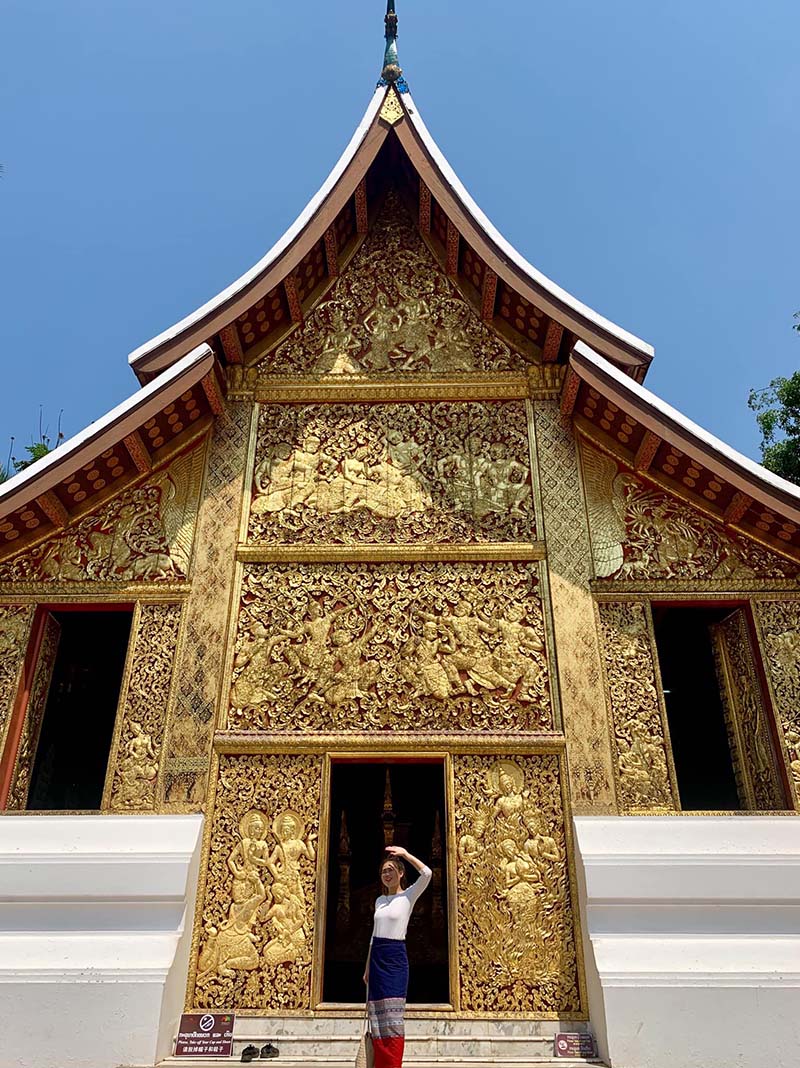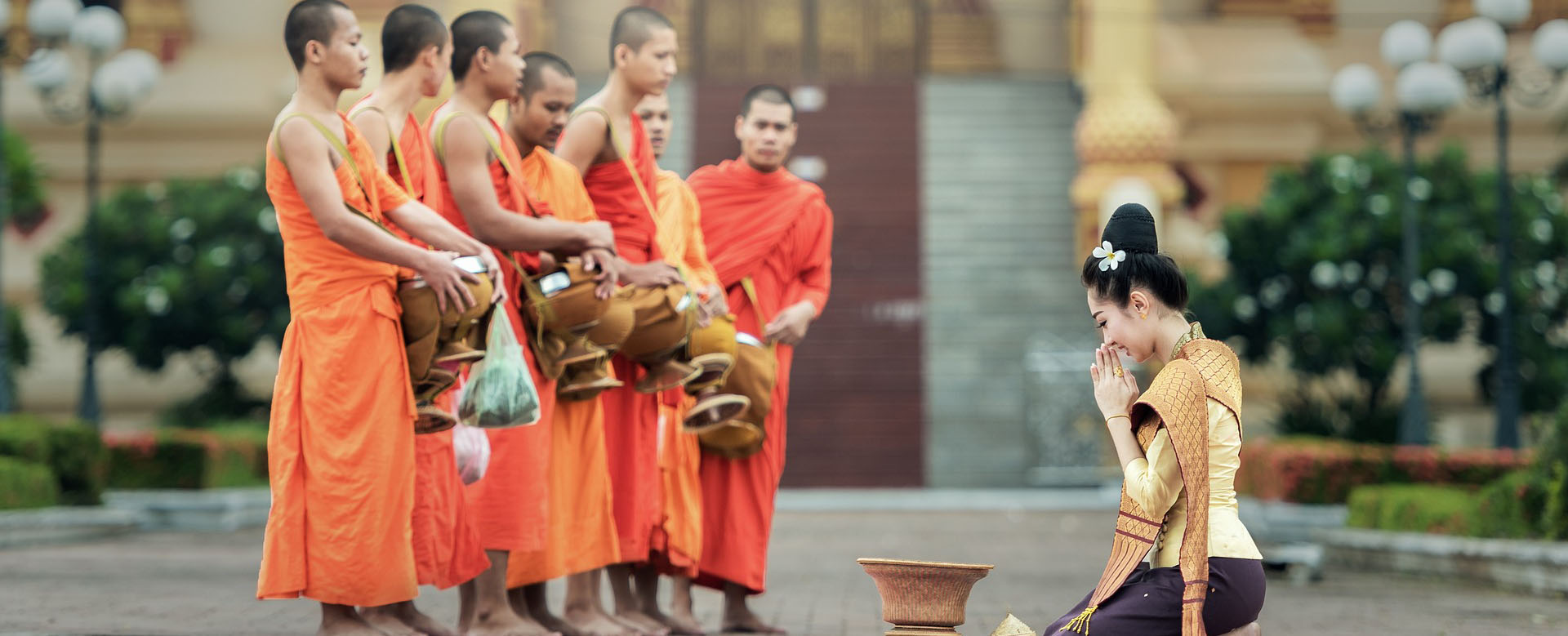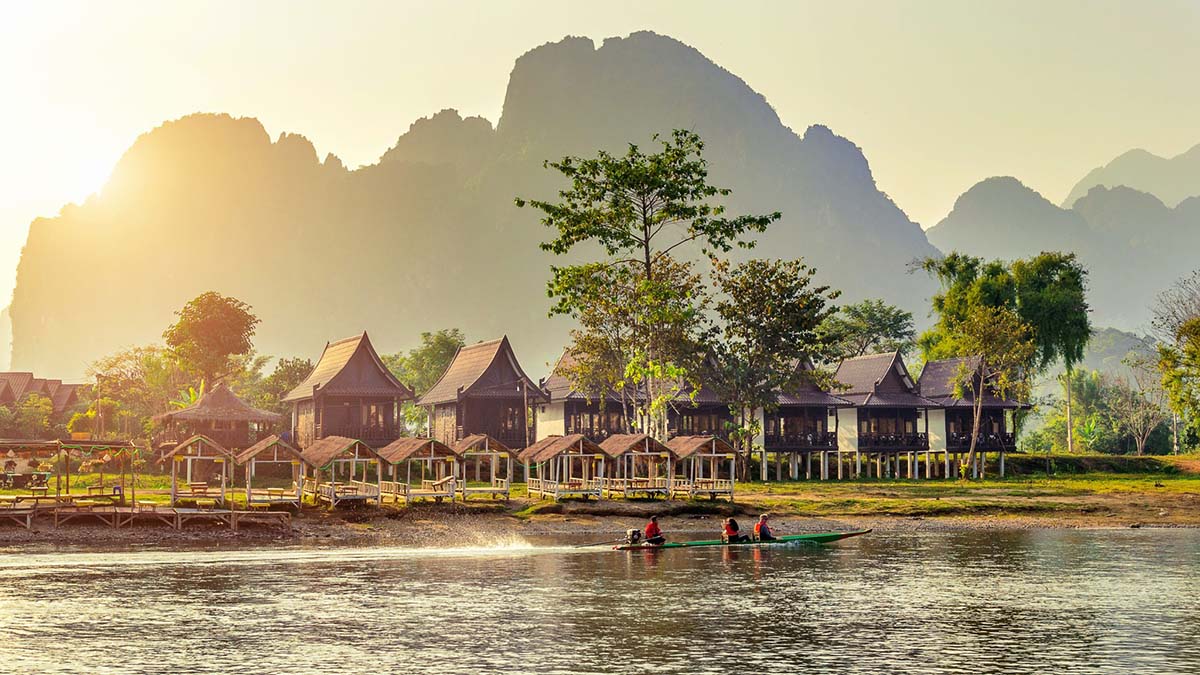The history of Wat Xieng Thong
Wat Xieng Thong is often called the Golden City Temple. This enchanting temple was founded in 1560 by King Setthathirath, a prominent ruler of the Lao Kingdom of Lan Xang.
During King Setthathirath's reign, he sought to consolidate power and promote Theravada Buddhism as the state religion. Besides, the vision for Wat Xieng Thong is also to showcase his wealth and artistic prowess. The temple served as a testament to the prosperity and cultural achievements of Lan Xang.

Wat Xieng Thong has been an ancient temple for over 500 years
Furthermore, Wat Xieng Thong was constructed as a royal temple serving both religious and ceremonial purposes. It was here that many Lao monarchs, including King Setthathirath, were crowned and held essential religious ceremonies. The temple was also a site for royal funerals and served as the final resting place for several Lao kings, with a designated Royal Funeral Chapel within its complex.
Over the centuries, Wat Xieng Thong has endured periods of neglect, destruction, and restoration. It faced significant damage during the sacking of Luang Prabang by invaders in the late 19th century. In the 20th century, efforts were made to restore and preserve this cultural treasure. It was designated a UNESCO World Heritage Site in 1995 as part of the historic town of Luang Prabang.
Where is Wat Xieng Thong?
Nestled at the northern tip of the Luang Prabang Peninsula, Wat Xieng Thong enjoys an idyllic location along the serene banks of the Mekong River. This temple is located between Khem Khong Road and Sakkaline Road.
-
Opening hours: 8 AM - 5 PM
-
Ticket fee: 20,000 Kip per Person (~0.99 USD)
How to get to Wat Xieng Thong?
As I see it is very easy to get to Wat Xieng Thong if you are already in Luang Prabang. The temple is within walking distance for those who enjoy strolls along the picturesque streets of Luang Prabang. Therefore, you can save your travel expenses by reaching Wat Xieng Thong on foot especially if you're staying in the town center.
Besides, hiring a tuk-tuk or taxi from the town center is also a delightful way to get to the temple. The average fees for each type of transport are listed below.
-
The tuk-tuk fare is about 15,000 - 30,000 LAK (1.7 - 3.5 USD). One tip for you is that you have to ask about the fare carefully before getting on.

Tuk-tuk will let you experience a great street view
-
The starting fare of a taxi is 2.0 USD. Then, each kilometer is priced at 1.49 USD. If you require the driver to wait for you, the fee is $5 per hour.

A taxi is also a convenient and speedy mode of transportation
However, if you're coming from other major cities within the country, the most convenient way to reach Wat Xieng Thong is by flying into Luang Prabang International Airport. This airport connects the town to various domestic and international destinations.
Upon arrival at the airport, you can easily find tuk-tuks and taxis waiting to transport passengers to different parts of Luang Prabang, including Wat Xieng Thong. The temple is located about 4 kilometers (2.5 miles) from the airport.
Unique architecture
I don’t know about you, but I have to claim that the temple's grandeur immediately attracted me at first glance. The temple's architectural design is a testament to the exquisite craftsmanship of the Lao people during the 16th century. There are 3 main areas attracting you the most as below.
The Sim
A Sim is the central shrine hall of a Laotian temple. Wat Xieng Thong’s Sim is the architectural masterpiece of this historic temple. It is made up of many cascading roofs and is lavishly adorned. The roofs are a key feature of the construction, sloping downward in a complex pattern. Also, elaborate gilded eaves with intricate carvings and delicate wooden motifs embellish the roofline. These details make roofs catch the light very well and create a dazzling spectacle, especially when the sun's rays fall upon them.

Sim is the most attractive place in Wat Xieng Thong
The roof of the front portico is supported by four black and gold stenciled columns. The facade below the portico is black lacquered with gold stenciling depicting deities, mythological animals, Jataka story settings, and floral patterns. The outer walls of the temple are adorned with gold-stenciled deities, Apsaras.
In addition, on Sim’s rear wall is an attractive mosaic of the Tree of Life on a red background. There is a standing Buddha at the top of the image, while many animals, including a tiger and two peacocks, are at the bottom. On each side of the mosaic is a beautifully carved, gilt entrance door flank.
The Red Chapel
The Reclining Buddha, one of Laos' best bronze statues, is housed in the Red Chapel. It is one of Wat Xieng Thong's most beautiful and significant structures. It has a three-layer roof with 18 naga brackets supporting the bottom layer and four ornate finials at the top two tiers.

This is a stunning place for tourists to snap photos
The chapel's interior is ornamented with gold stencils on red or black walls. Likewise, the facade is coated with a red stucco inlaid with beautifully colorful glass mosaics. There are plenty of miniature gold Buddhas connected to the walls, depicting the miracle at Savatti. The mosaics depict conventional village themes as well as ethereal religious scenes situated higher on the walls.
Chariot Hall
Chariot Hall, known locally as Haw Chan. This beautifully designed hall is renowned for housing the funeral carriage of the Lao royal family. Aside from that, it is a masterpiece of Lao architecture, adorned with intricate wood carvings and layered roofs that evoke a sense of regal grandeur. The funeral carriage, a symbol of immense historical significance, is a testament to the royal traditions and cultural heritage of Laos.

Exquisite details of Chariot Hall
Things to keep in mind when visiting Wat Xieng Thong
There are several important considerations to ensure a respectful and enjoyable experience when planning a visit to the culturally significant Wat Xieng Thong:
-
Dress Modestly: Visitors should dress conservatively out of respect for the temple. Wear clothing that covers your shoulders and knees. I recommend you to use sarongs or scarves for covering exposed areas if needed.
-
Remove Your Shoes: As is customary in Buddhist temples, you must remove your shoes before entering any temples.
-
Photography Rules: Always ask for permission when photographing monks or worshippers.
-
Offerings: You can make an offering with flowers or incense.

Follow these rules to have a good time in Wat Xieng Thong
Explore further in our dedicated article on Laos travel guide!
Wat Xieng Thong invites us to embrace the tranquility of its surroundings, wander through its sacred halls, and unlock the profound spiritual connection that transcends time. If you wish to combine an itinerary to this temple with learning more about the beauty of other places in Laos, please contact New Asia Tours for more detailed information.







